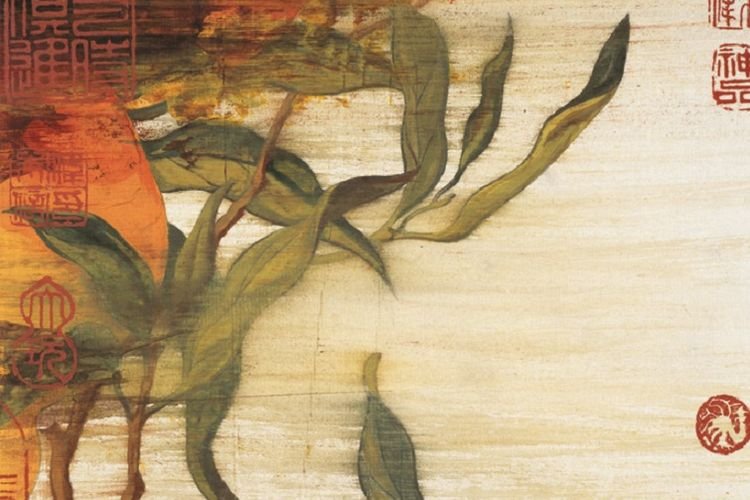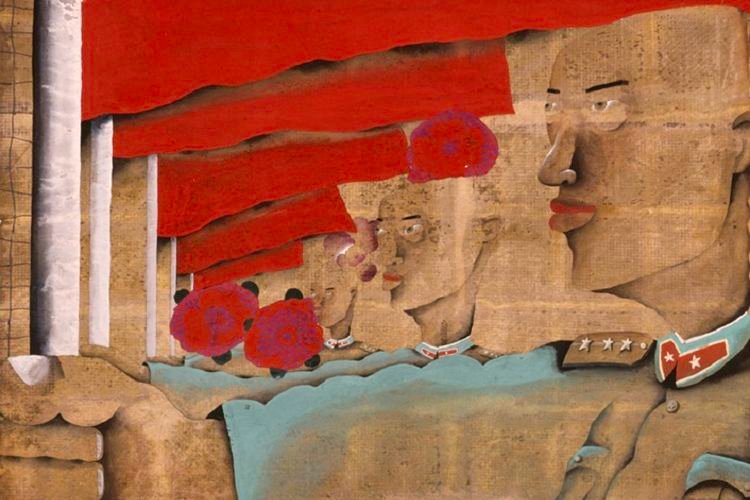
Zhu Wei, Album of Vernal Equinox, No. 2, 2011
We have been Asian perfumes of this century to become an area that becomes an important global force. The Asian nation by many scholars is said to have found the concept of identity after 200 years of hegemony by the West.
One of them, Kishore Mahbubani, the most vocal thinker for Asia who mentions that all this time the Asian people learn very hard on his past from the West.
Mahbubani said that the Asian nation has undergone a transformation of the "seven pillars of Western wisdom," ie free markets, meritocracy, pragmatism, science and technology, culture of peace, education and law enforcement, all of which began to be abandoned by some Western nations.
In his New Asia Hemisphere World: The Inevitable Global Shift to East (2008), Mahbubani awakens us to his thesis. Reality in a number of countries in the West tends to prioritize active energy for conflict in some areas, then implements an ambiguous free market, such as protection of certain products.
Western countries that in decades tend to be democratic system also infected with non-meritocracy ideology, which accepts the values of kinship and cronyism rather than using objective reasoning independence.
At Harvard University in 2015, in his lecture Mahbubani reiterated, citing data from the IMF that in the 1980s the United States contributed the global economy to 25 percent. While China is only 2.2 percent. But in less than 40 years in 2014, the US economy has weakened, accounting for only 16.2 percent globally.

Zhu Wei, The Story of Beijing, 1993
While China drove rapidly with a contribution of 16, 3 percent. Thus Mahbubani in his own way wants to remind that world conditions are undergoing dramatic changes.
The Asian awakening should not have to be panicked by the West. Instead of generating conflict, the West should offer the East share a global responsibility in dealing with common problems.
Chinese Art and Zhu Wei
China as an Asian giant besides India in the world of contemporary art is also highly regarded in the West. Thousands of years of inherited artistic expression whose manifestation of expression - strong expression of the dynastic era gave Chinese cultural optimism contribute to contemporary global art.
Names such as Zhang Xiaogang, Yue Minjun, Fang Lijun, Ai Wei Wei, Cai Guo-Qiang, until Zhu Wei are well-regarded by museums as well as National Gallery as well as prestigious events such as the global Biennale Art.
Not to forget the commercial auction institutions such as Christie's and Sotheby's since 3 decades ago displays the works of contemporary Chinese art.
One of the most powerful Chinese artists, Zhu Wei, known for his contemporary Chinese ink paintings during August to early October 2017, had the chance to exhibit solo at the National Museum of Indonesia.
As a Zhu Wei artist in addition to painting, he is known for liking to write down his artistic ideas and views of social and political issues as well as a critical attitude towards his country. His thoughts are littered in his essays expressed in a number of arts and cultural publishing media and books.
Zhu Wei along with a number of observers, curators and museum directors in Asia revealed in his exhibition book in Jakarta with the same title as his exhibition: Virtual Focus.
The book mentions the existence of contemporary Chinese art and its relation to Chinese culture. Related to the period of the cultural revolution, post-tragedy of Tiananmen, imitation of Chinese art towards modern western style, as well as contemporary Chinese art face to face with global contemporary art.
Most interesting is how Asian art observers have revealed that Zhu Wei inherited 3,000 years of classical Chinese painting techniques as an artistic attitude today, the traditional Gongbi techniques and styles.
Gongbi shows us that artistic exploration does not strip off the roots of sedentary culture, even thousands of years. Zhu Wei demonstrates the transformation of classical Chinese painting to adapt the development of local contemporary art in China.
Even offering the power of locality in the dialogue of art that was said in previous centuries was only part of the "traditional art" which is now now said to be a global characteristic force coming from China.
From the semi-retrospective exhibition, we can assess how much Chinese culture has influenced Chinese artists to see themselves, the present and the legacy of thousands of years of visual expression.
Zhu Wei was born from a modest family on the western outskirts of the Beijing steel mills, after leaving the military service. He pursued his artistic career as an artist. Around the end of the 90's, his name was known and the beginning of the new millennium gave him the opportunity to travel around the world and his work was exhibited and enjoyed by the world's public in a number of 40 international museums.
Her solo exhibition, Virtual Focus, which is her aesthetic journey anime since 1987 to 2017 is an up-to-date series of exhibits ranging from Beijing Today Art Museum, Nanjing Academy of Art Museum, Museum of Contemporary Art Singapore to National Museum in Jakarta.
The Zhu Wei exhibit is brightly lit, in the Indonesian context, opening up the opportunity that our art, especially with its local cultural features, is awaited by the world. When the disruptive era strikes, the world's contemporary art world reveals its new aras.
A welcome gate welcomes Indonesian artists who bring our diverse cultural azali from the treasures of the archipelago, such as art that is rooted in Arabic, Chinese, Malay, etc. which has settled on us.